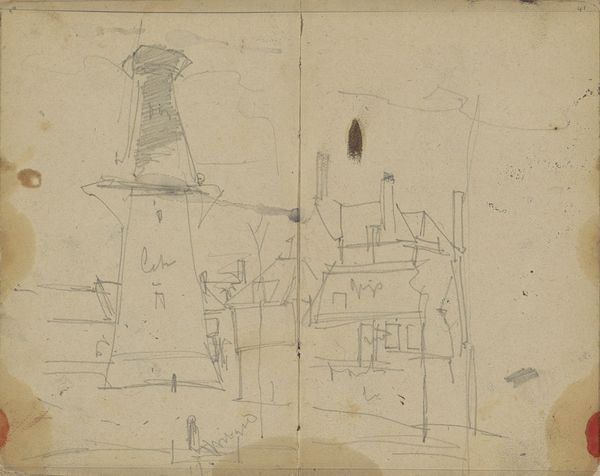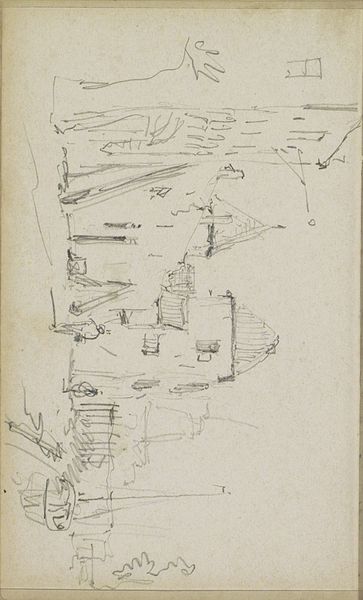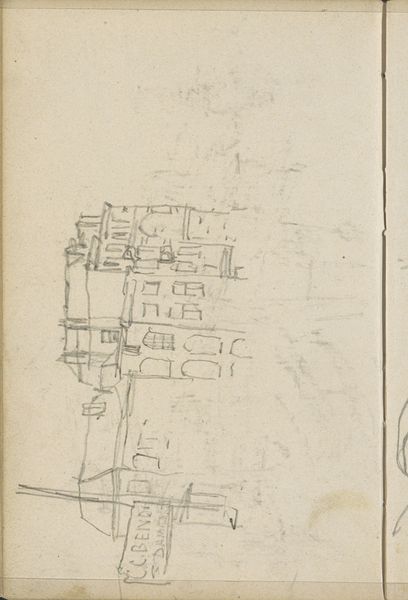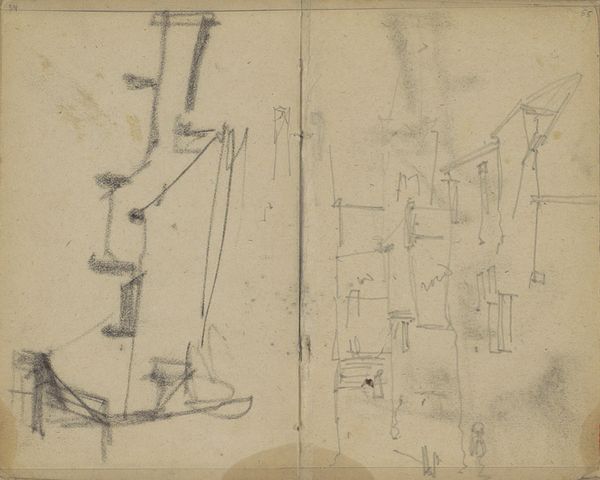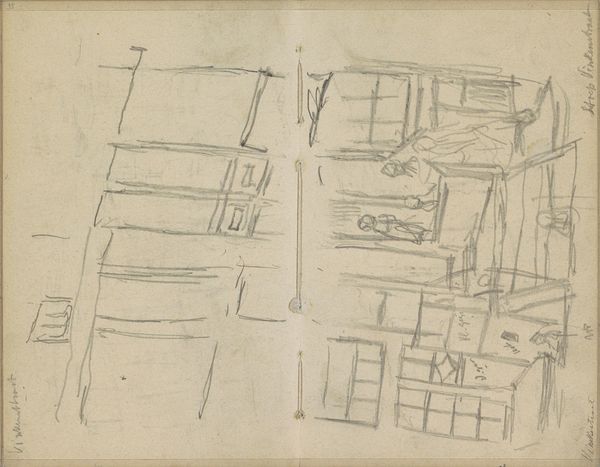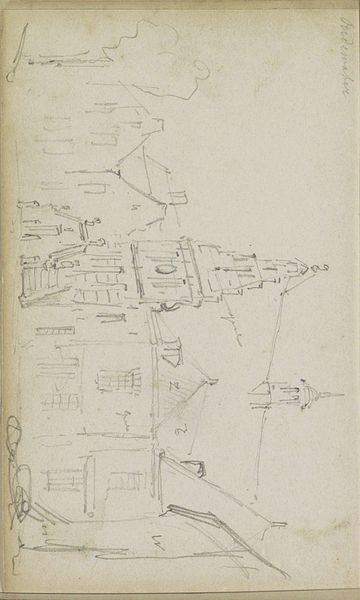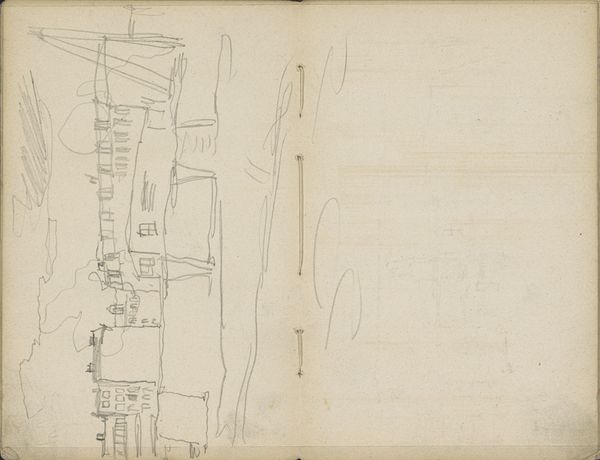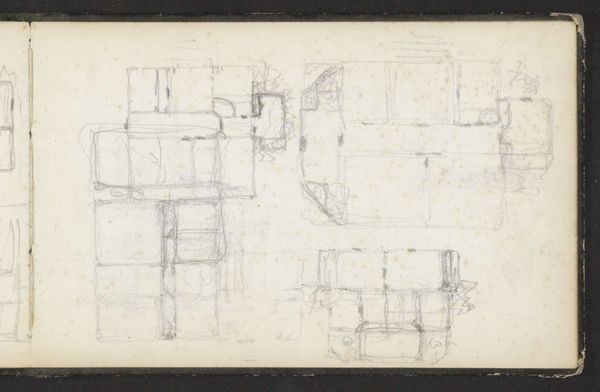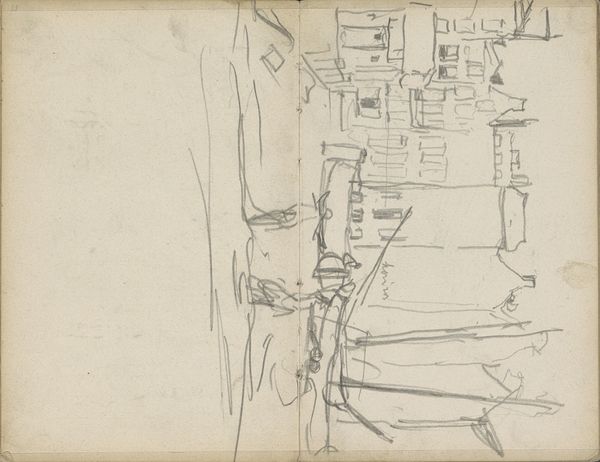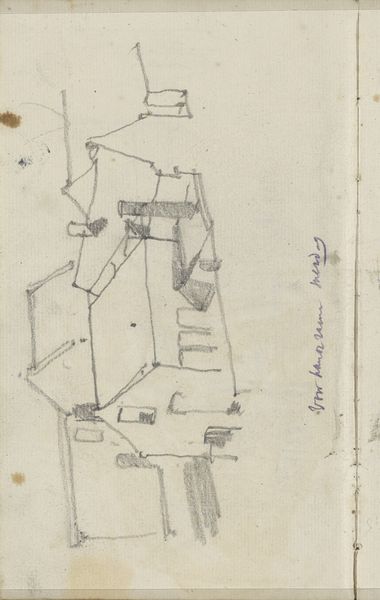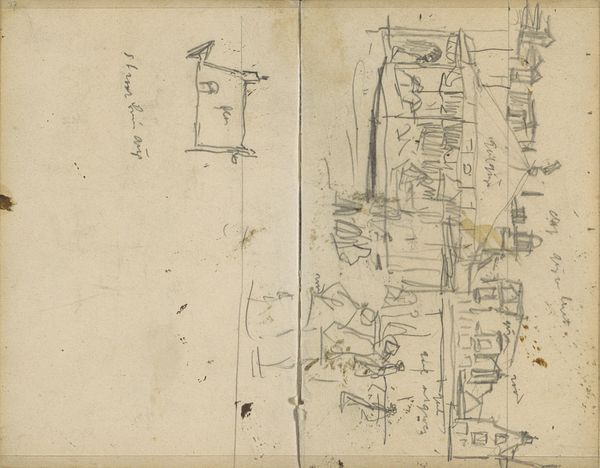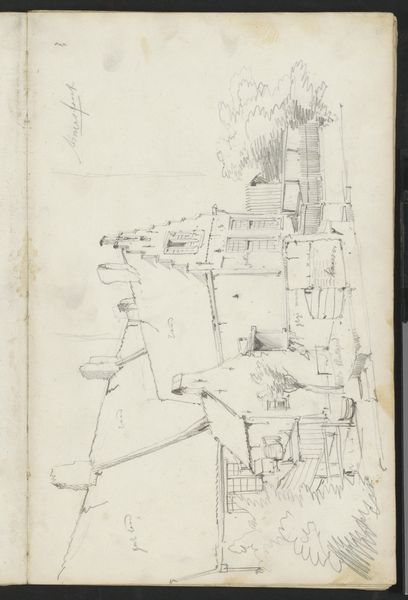
#
aged paper
#
toned paper
#
sketch book
#
incomplete sketchy
#
hand drawn type
#
personal sketchbook
#
hand-drawn typeface
#
fading type
#
sketchbook drawing
#
sketchbook art
#
building
Copyright: Rijks Museum: Open Domain
Editor: This sketch by George Hendrik Breitner, "Gevels en een staande vrouw," dating from around 1881 to 1883, feels incredibly raw and immediate. It's like a glimpse into the artist's working process. The sketchiness lends a kind of urban grittiness, even though it's just lines on paper. What captures your attention most about this piece? Curator: The immediacy is key, and I think you're right to pick up on the sense of urban reality. Breitner was deeply invested in documenting the everyday life of Amsterdam, particularly its working classes. His sketchbooks were tools for capturing those fleeting moments, raw observations that might later be refined into paintings. Editor: So, this wasn't just a quick doodle then? It was part of a larger project? Curator: Absolutely. Consider the context: photography was still a relatively new medium, and Breitner embraced it alongside sketching. He saw both as ways to honestly record modern life, unfiltered by academic ideals. Notice the contrast between the architectural details and the fleeting presence of the figure, likely a working woman of the city. Editor: That's a fascinating juxtaposition – the permanence of buildings versus the ephemeral quality of human life. It feels very modern, even now. Do you think his audience at the time recognized this new focus? Curator: It was certainly part of what made his work controversial. The art establishment expected idealized landscapes or portraits, not these glimpses into the realities of urban existence. He was pushing the boundaries of what was considered suitable subject matter. This challenges us to reflect on who is depicted and why. What purpose does a drawing like this serve, if not a grand, idealized artistic statement? Editor: I see it as democratizing art, in a way. It’s taking art out of the salon and putting it on the streets. Curator: Precisely. And perhaps giving those who lived on those streets a voice. Reflecting on his intentions changes the way I view not only the drawing, but the power of imagery to include people and realities of the everyday world that were excluded until then. Editor: I hadn't considered that level of social commentary. It's amazing how much depth is packed into a simple sketch!
Comments
No comments
Be the first to comment and join the conversation on the ultimate creative platform.
